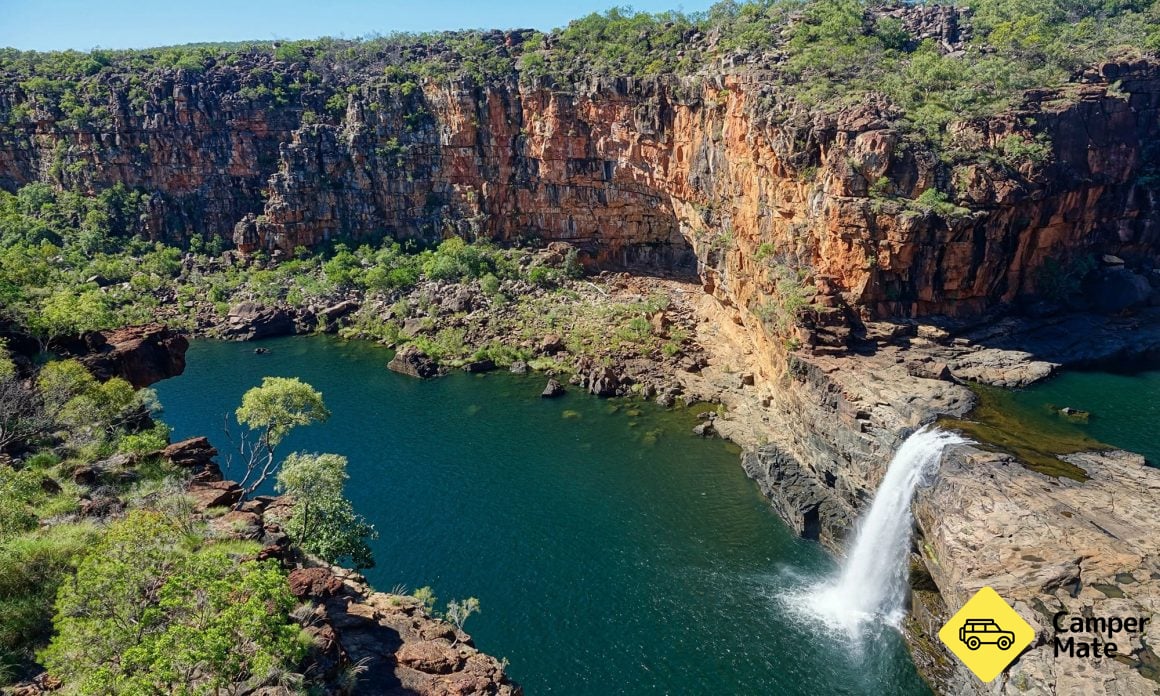
Western Australia
The Mitchell Plateau: Australia's final frontier
June 24, 2019 • Toby Ley
6 min read
The Kimberley region is home to some of Australia’s most spectacular gorges and waterfalls, but none are quite as impressive as Mitchell Falls, tucked away in one of the country’s last remaining wilderness frontiers.
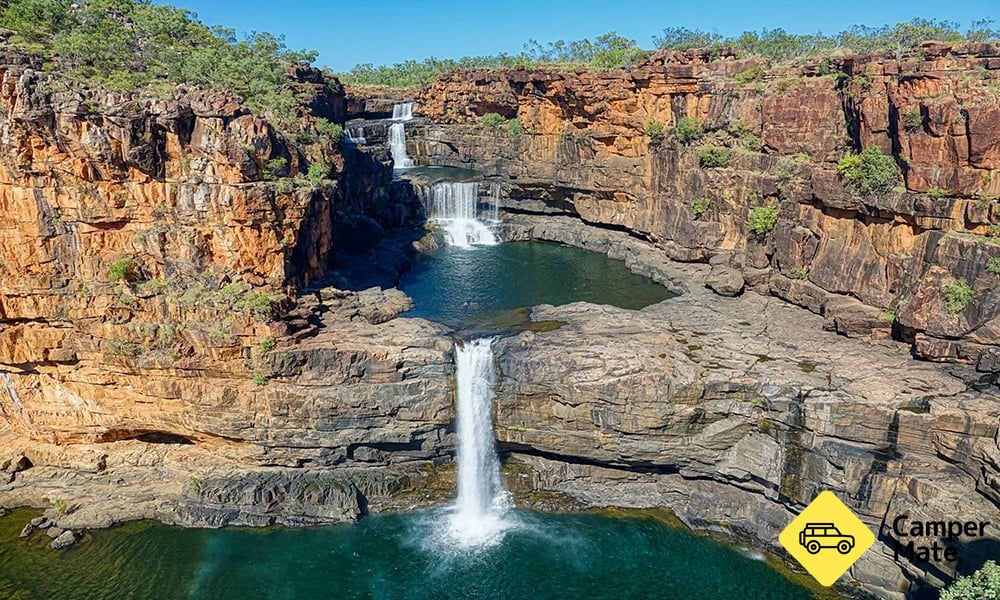
Isolated, untouched and hidden away in the north of the Kimberley, the Mitchell Plateau is one of Australia’s last truly wild destinations. Home to the iconic Mitchell Falls, the area has long been a lure for nature enthusiasts. While the rugged and inaccessible terrain has been home to indigenous tribes for millennia, its isolation kept it safe from the overzealous colonial development wreaked by early European settlement across Australia.
It wasn’t truly explored by Europeans until the 1900s, as part of some of Australia’s last true exploratory expeditions, and even then it was left largely untouched. It stayed such a remote area that it wasn’t even opened to tourism until recent decades, and for many years was really only a destination for serious 4WD drive enthusiasts.
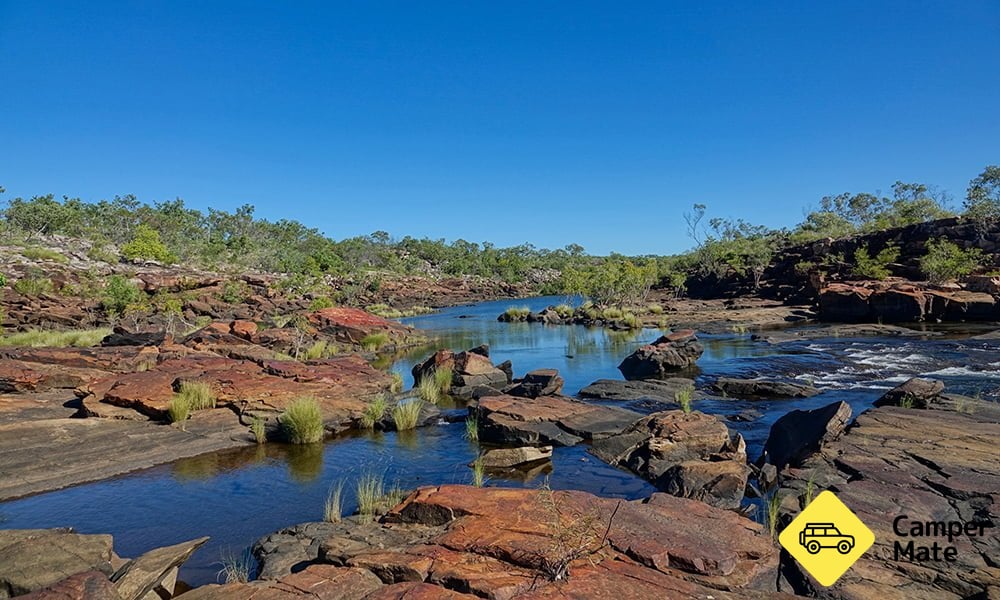
These days, the journey isn’t quite so gruelling, and depending on your timing it can actually be a bit of a cruise. It’s still a remote wilderness area, but with each passing year places like this are becoming more and more accessible. At certain times of year you might find the dirt roads just like any other, while other times you’ll hear no shortage of stories from unfortunate travellers who’ve had their beloved vehicles towed back to civilization for an inordinate fee.
Either way, it’s still far from the easiest place to reach. A 4WD is essential, and a little planning needs to be done. It’s a 460km round trip from the Gibb River Road, with Drysdale River Station providing the only taste of civilization on the way. Many people hire 4WDs from Broome or Kununurra, and several companies offer scenic flights for those who don’t wish to tackle the drive.

For those that do, the road usually opens by May. The Mitchell Plateau boasts one of the highest rainfalls in the country, and the entire area is generally completely inaccessible during the summer months, and severe wet seasons can see the closures extended to June.
At the worst of times, usually after a heavy wet or an equally heavy tourist season, you’ll come up against corrugations, washouts and long stretches of muddy red puddles. At its best, you might face an occasional bump or a stray puddle here or there. The good news is that with a recent permit system now in effect, there’ll likely be more funding channelled towards keeping the road maintained.
The force of the wet season can also determine just how spectacular a visit it can be, with the titanic falls sometimes reduced to a mere trickle by the end of the dry season, or sometimes even earlier. While it’s impossible to pick a perfect date to visit in advance, late May or early June is generally your safest bet.
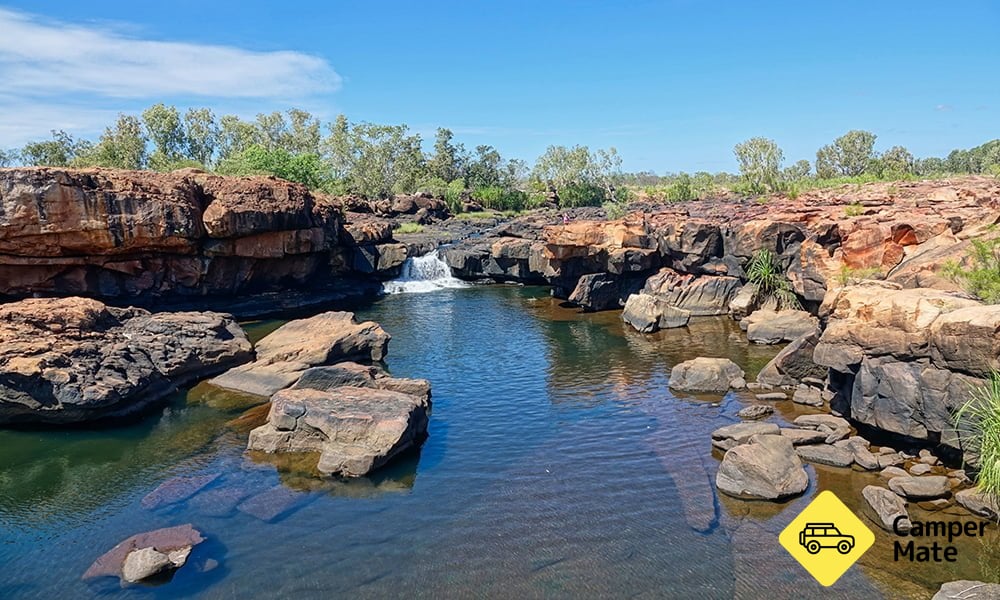
From the Gibb, it’s about 160km along Kalumburu Road to the Mitchell Plateau turnoff. Corrugations can be fierce, but overall the road conditions generally aren’t too bad. From here, the Port Warrender road is a bit of a mixed bag. It begins with the King Edward River crossing. It’s short and the bottom is nice and rocky, but as always take care after a heavy wet season.
On the other side you’ll find the Munurru Campground and day use area. The river here is beautiful for a swim, with several rocky pools and a nice waterfall. There’s two indigenous historic sites nearby, with some of the best preserved and most accessible art in the Kimberley.
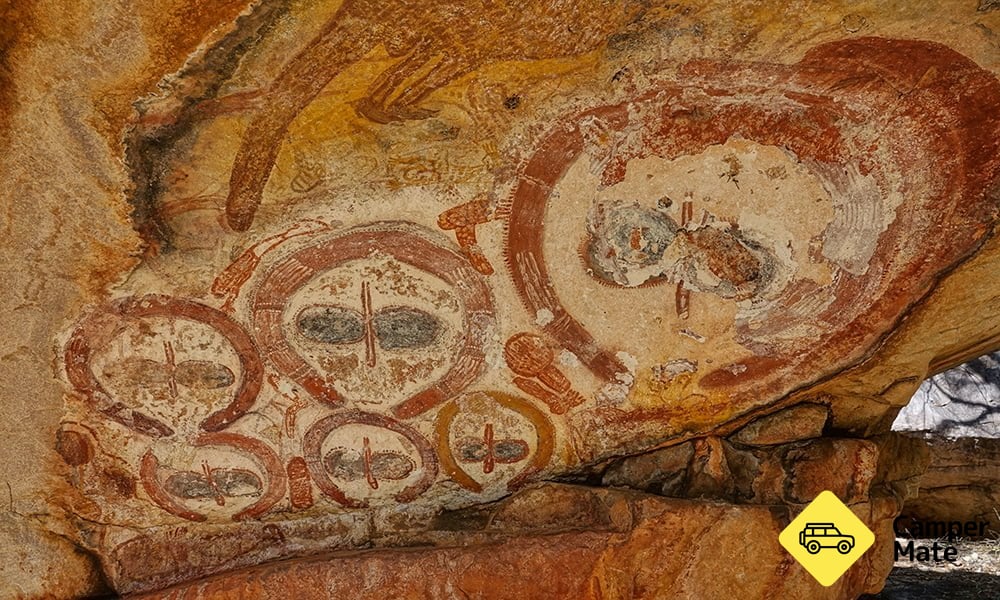
From here, the 75km drive to Mitchell Falls Campground can take anywhere from an hour and a half to three hours. It’s some beautiful scenery, through lush palm forests with glimpses of the escarpment-country to either side as you rise onto the plateau. Mitchell Falls is arguably the only major destination up here, although Surveyor’s Pool, another 30km down the main road, is worth a visit if you’ve got the time. For 4WD enthusiasts the road continues to Walsh Point at Port Warrender, although the going can be rough and I’ve heard the results are nothing to write home about.
Mitchell Falls Campground has a good choice of space and shady sites. While camping fees apply, park fees have been removed and are now covered by the Uunguu Visitors Pass, which costs $45 a person and needs to be purchased beforehand. While there’s pros and cons for just about whatever time you choose to visit, I will say this: the earlier you are doesn’t just mean you’ll have less crowds, but you likely won't have to put up with the near-constant roar of helicopters taking off.
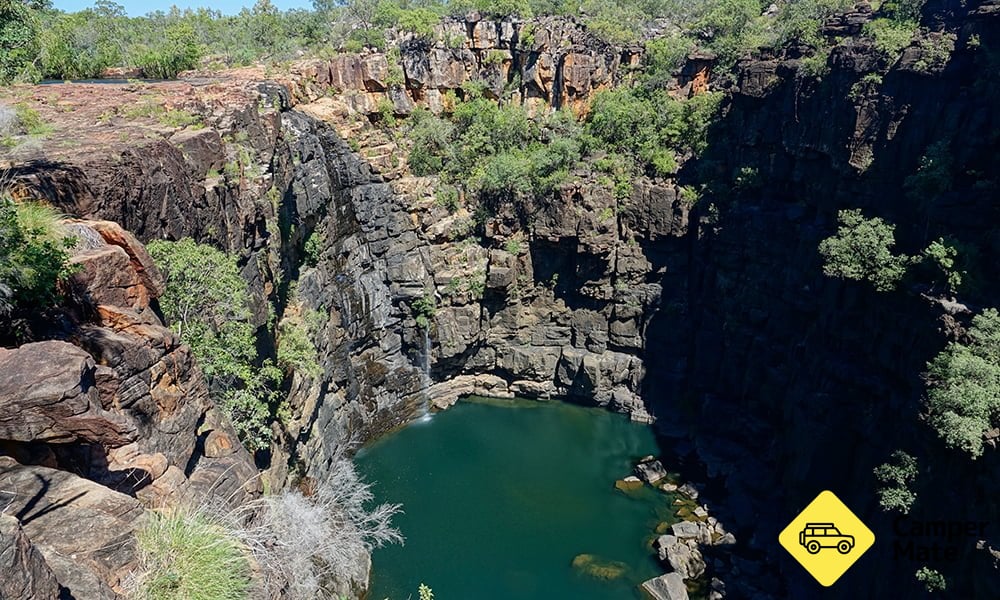
Ah yes, helicopters. For most of the tourist season, Helispirit operates a helicopter taxi service, ferrying people from the campground to the falls and back. While it’s convenient for the less-mobile and no doubt a spectacular way to see the falls, the fact that the landing pad is directly adjacent to the camping area does kill the tranquility a little, and the fumes are far from pleasant.
Personally, I’d recommend walking at least one way. It’s an 8.6km return track, and for the most part the going is easy enough. It crosses and follows Little Mertens Creek, with rocky escarpments to one side and a small stretch of pandanus rainforest along the creek. There’s a detour up to a lookout that overlooks the fragmented country towards the falls, which is beautiful at sunset.
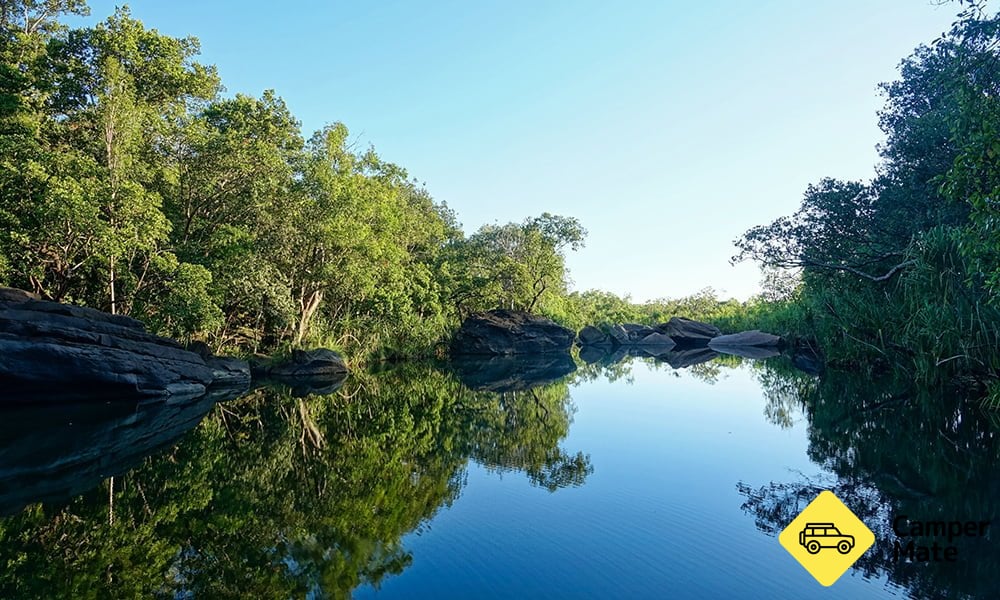
There’s a good opportunity for a swim in the shallow pool at the base of Little Mertens Falls. From here, the track crosses open savannah and rocky outcrops before following the shady creek once more to Big Mertens Falls.
The high average rainfall, combined with the remoteness of the area, means Mitchell Plateau is an absolute haven for wildlife. In fact, it is the only area in Australia to have experienced no extinctions of native fauna since the arrival of Europeans. Look out for Rockhole Frogs, Grasswrens, snakes and the adorable Monjon, Australia’s tiniest Rock-wallaby.
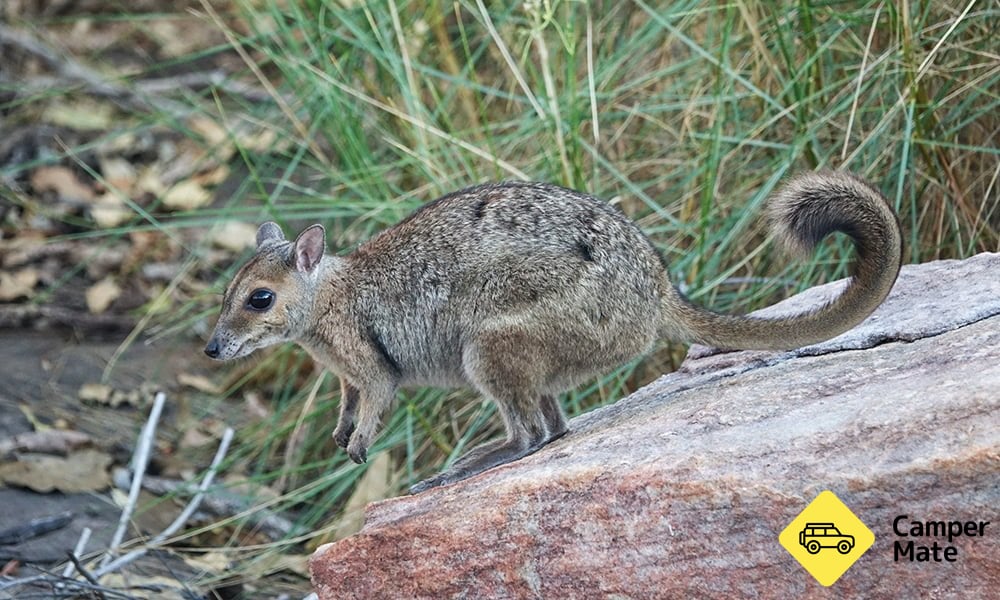
Big Mertens Falls is an impressive gorge with a tranquil billabong at the top, and from here, Mitchell Falls is just around the corner. The first glimpse is of the wide river and the rocky gorge country to either side, before the track skirts around and you cross the river via a series of stepping stones upstream of the falls.
This whole section is beautiful for a swim, but for obvious reasons stay away from the top of the falls. On the far side, follow the rocky path to a basic lookout that looks directly onto the falls. The view of the four thundering tiers and the emerald rockpools is one of this country’s most spectacular sights. Seriously, words and photos just cannot do it justice.
